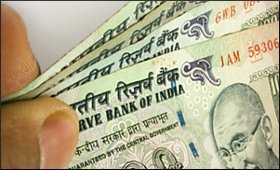|
|
|

|
India Inc revenue likely grew 18-20% in 2nd quarter
|
|

|
|
| Top Stories |
 |
|
|
|
SME Times News Bureau | 11 Oct, 2021
Higher commodity prices and continued revival in demand for consumer
discretionary products likely lifted corporate revenue 18-20 per cent
on-year to Rs 8.2 lakh crore in the second quarter of this fiscal,
indicates a CRISIL Research study of 300 companies (excluding from the
financial services and oil sectors) that account for 55-60 per cent of
the market capitalisation of the National Stock Exchange.
Revenue
from consumer discretionary products such as automobiles likely spurted
19-21 per cent on-year, aided by higher realisations and volume.
Construction-linked
sectors are estimated to have grown 22-25 per cent on-year, benefiting
from the low-base effect of last fiscal.
Overall revenue growth
would be primarily supported by price hikes driven by costlier
commodities. On-year volume growth would be mostly in single digit
across key segments except commercial vehicles. To be sure, growth
momentum would have slowed compared with the 47 per cent on-year
increase seen in the first quarter.
On a sequential basis, overall revenue is likely to have grown 8-10 per cent.
Revenue
from consumer discretionary products is expected to have risen 23-25
per cent sequentially after demand was hit by the second wave of the
Covid-19 pandemic in the first quarter.
Construction-linked
sectors are estimated to have grown a moderate 3-5 per cent as seasonal
weakness slowed down execution and volume growth.
Revenue in the
automobiles sector is estimated to have grown 27-30 per cent
sequentially, led by an increase in realisations. That, in turn, is
expected to steer growth for ancillary segments such as auto components
and tyres, which have likely grown a robust 12-14 per cent and 6-10 per
cent on-quarter, respectively.
Overall revenue of the sample set
is expected to have risen to Rs 15.8 lakh crore in the first half of
this fiscal, up 30- 32 per cent on-year.
Says Hetal Gandhi,
Director, CRISIL Research, "Elevated commodity prices and healthy
realisations would lead to better revenue performance across sectors in
the second quarter. As many as 24 of the 40 sectors represented by
these 300 companies have likely grown over 20 per cent on-year. But
overall revenue growth would be a notch lower at 15-17 per cent
excluding commodity sectors such as steel and aluminium. On a sequential
basis, it could be even lower at 8-10 per cent, with export-linked
sectors such as IT services and pharmaceuticals proving to be drags,
even though growing at a stable 4-6 per cent."
The moderation in
revenue growth is expected to have trickled down to earnings before
interest, tax, depreciation, and amortisation (Ebitda), which is
estimated to be up an average 5-7 per cent sequentially. From an on-year
perspective, that would be 24-27 per cent higher because of the
low-base effect.
Consequently, operating profitability, as
represented by the Ebitda margin, would have narrowed by 40-80 bps on-
quarter as a complete pass-through of the sharp increase in raw material
cost would not have been possible.
Nearly half of the 40
sectors are expected to log a sequential drop in Ebitda margin amid
rising input prices. While overall margins may have continued to improve
on-year to 100-120 bps, excluding companies in the aluminium and steel
products segments, it would have contracted 30-70 bps.
"The
ability of companies to pass on the surge in commodity prices is
limited, which caps the rise in margins. Crude oil prices are up 71 per
cent in the second quarter on-year, and steel 47 per cent. Power and
fuel expenses have risen because of 2x higher coal prices and over 4x
higher spot gas prices. These would add to the woes, leading to margin
contraction in the power and cement sectors," adds Hetal Gandhi.
For
the first half of this fiscal, overall Ebitda margin (for 300
companies) is estimated at 22-24 per cent, marking an expansion of
200-250 bps on-year, and driven by a 380 bps expansion in the first
quarter.
|
|
|
| |
|
|
|
|
|
|
|
|
|
|
|
|
|
|
| |
| Customs Exchange Rates |
| Currency |
Import |
Export |
US Dollar
|
66.20
|
64.50 |
UK Pound
|
87.50
|
84.65 |
Euro
|
78.25
|
75.65 |
| Japanese
Yen |
58.85 |
56.85 |
| As on 13 Aug, 2022 |
|
|
| Daily Poll |
 |
 |
| PM Modi's recent US visit to redefine India-US bilateral relations |
|
|
|
|
|
| Commented Stories |
 |
|
|
|
|
|
| |
|